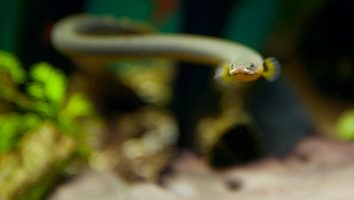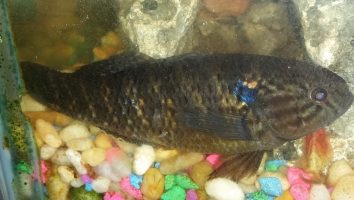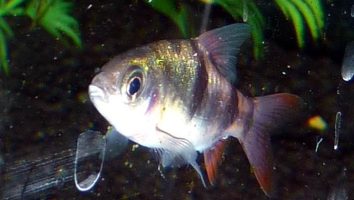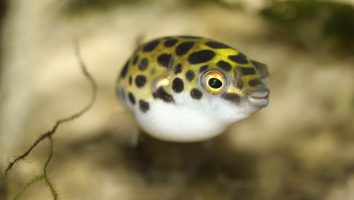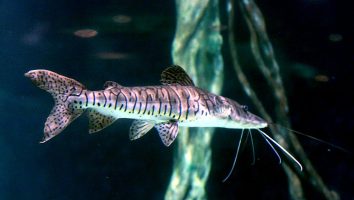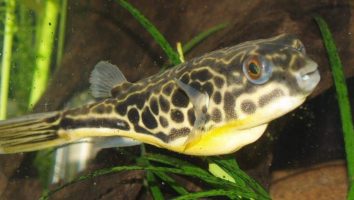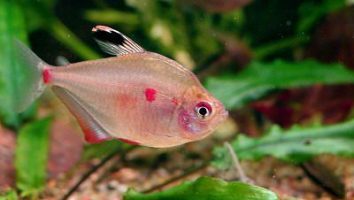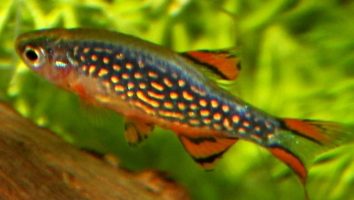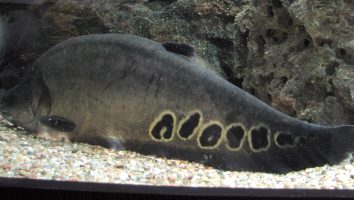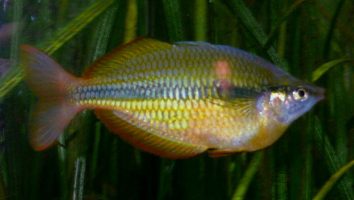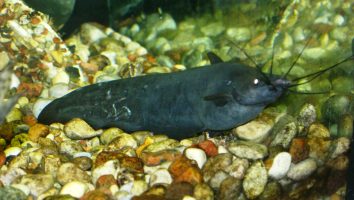Duboulayi’s rainbowfish is a stunning freshwater fish that is native to Australia. They are a peaceful species that is perfect for beginners and experienced aquarists alike.
This guide will teach you everything you need to know about Duboulayi’s rainbowfish care. You’ll learn about their diet, size, lifespan, and more!
Table of contents
Species overview
Duboulayi’s rainbowfish (Melanotaenia duboulayi) is a species of freshwater fish that is native to Australia.
This fish is found in a wide range of habitats, but they prefer slow-moving or still waters with plenty of vegetation.
Duboulayi’s rainbowfish are omnivorous, and their diet consists of a variety of small invertebrates and plant matter.
This species is a popular choice for freshwater aquariums, and they are known for being peaceful and easy to care for.
Appearance
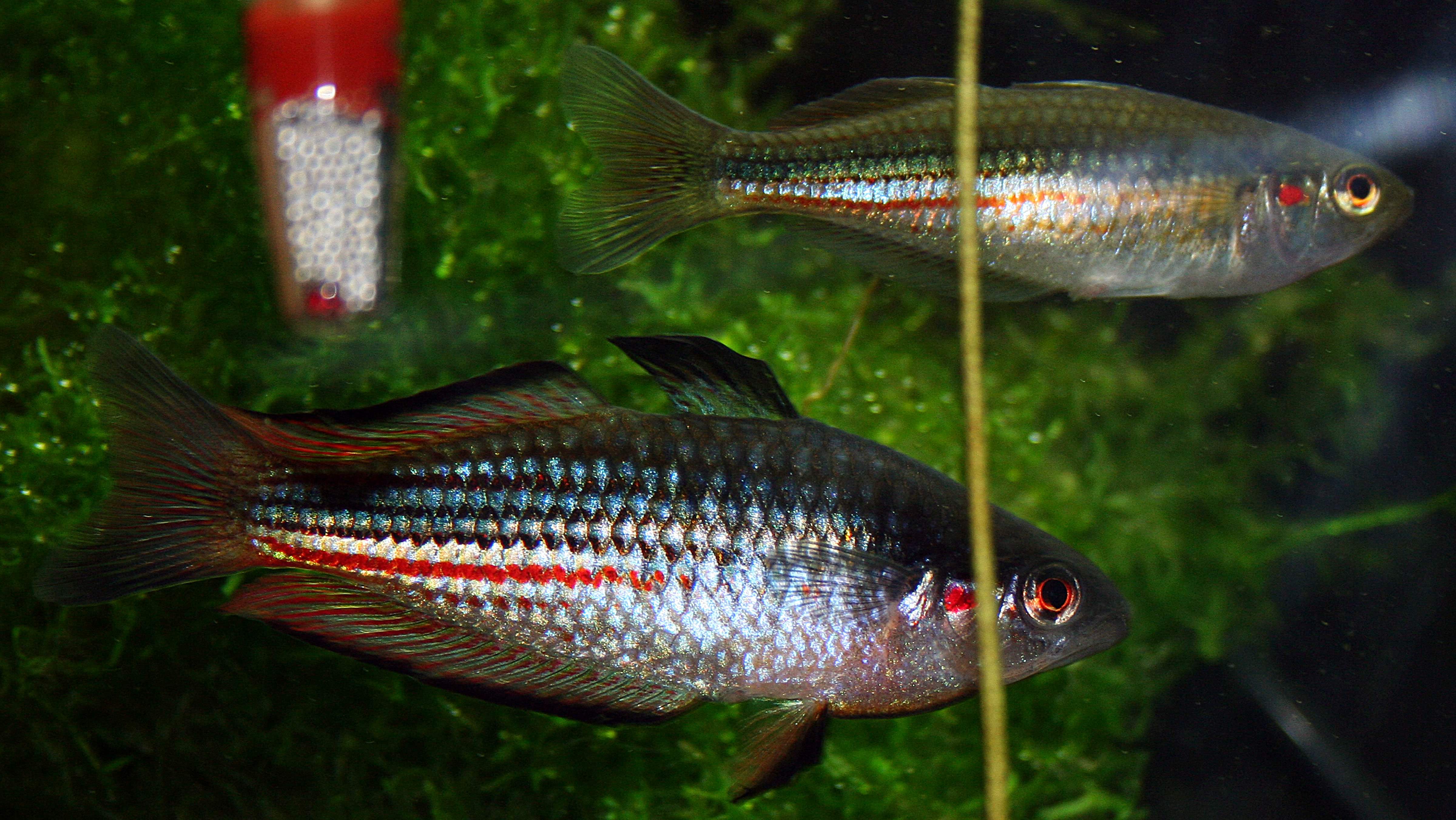
The Duboulay’s Rainbowfish is a beautiful freshwater fish that is native to Australia. As the name suggests, these fish are very colorful with a wide variety of colors and patterns.
The body of the Duboulay’s Rainbowfish is long and slender with a slightly flattened shape. The head is relatively small with a blunt nose.
Their fins are all moderately sized and relatively unremarkable. The dorsal fin is located towards the back of the body and is slightly taller than the anal fin.
The caudal fin is forked and symmetrical.
The most notable feature of the Duboulay’s Rainbowfish is their coloration. The body is covered in a variety of colors including yellow, orange, red, blue, and green.
There is often a dark stripe that runs along the length of the body. The fins are usually transparent with a hint of color.
Males are typically more brightly colored than females.
Lifespan
Duboulayi’s rainbowfish have an average lifespan of 3 to 5 years.
As with any fish, there are a number of factors that can impact their lifespan. Things like water quality, diet, and stress levels can all play a role in how long these fish live.
That said, if they are well cared for then they can definitely live towards the higher end of this range.
Size
Duboulayi’s rainbowfish grow to an average length of around 4 cm (1.6 in).
Tank
Tank Size
The minimum recommended tank size for Duboulay’s rainbowfish is 30 gallons. This is assuming you’re keeping them in a school of at least 5 or 6 fish (which you should).
We personally recommend a slightly larger tank if you can accommodate it. Every extra space will make a big difference and allow you to keep a larger school or more tank mates if you’re interested in a community tank.
Water Parameters
As with all rainbowfish, Duboulayi’s rainbowfish come from habitats with little or no current, so they are not accustomed to a lot of movement in their water. In the aquarium, they should be kept in a tank with similar conditions, with very little water movement.
The water parameters for Duboulayi’s rainbowfish are as follows:
- Temperature: 75-82 degrees Fahrenheit
- pH: 6.5-7.5
- Hardness: 5-20 dGH
- Alkalinity: 3-10 dKH
What To Put In Their Tank
When it comes to setting up the interior of their tank, you have a few different options.
The first thing you need to decide is what kind of substrate you want to use. These fish are not too picky, but we prefer a soft substrate like sand.
The next thing you need to consider is what kind of plants you want to put in their habitat. These fish are not known to nibble on vegetation, but they might uproot plants as they swim around.
We recommend going with plants that are either fast growers or can be anchored down well. Hornwort, Java Moss, and Water Wisteria are all great choices.
The last thing you need to consider is what kind of decorations you want to include in their tank. Driftwood, rocks, and caves are all suitable options.
Just be sure to avoid anything that has sharp edges. These fish are known to jump out of the water, so you don’t want them to hurt themselves on decorations.
Common Diseases
Duboulayi’s rainbowfish are a hardy species that are resistant to most diseases. However, there are still a few that you need to be aware of.
The most common one is velvet disease, which is caused by a parasitic protozoan. This will present itself as a gold or brown dust on the body of your fish.
If left untreated, this disease can be fatal. However, it’s relatively easy to treat with common medications like copper sulfate.
Another disease to look out for is bacterial infections. These are most often caused by poor water quality and can lead to a number of different problems like fin rot or septicemia.
As with velvet disease, bacterial infections are relatively easy to treat with medication. However, it’s always best to try and prevent them in the first place by keeping your tank clean and maintaining good water quality.
Behavior & Temperament
Duboulayi’s rainbowfish are one of the more peaceful species of rainbowfish. They are relatively docile, but can be a bit nippy towards each other if they are not given enough space. They are also known to be jumpers, so a lid on the tank is a must.
These fish are not very shy, and will often swim in the open areas of the tank. They are not very active, but will occasionally swim to the surface to grab a gulp of air.
Duboulayi’s rainbowfish are not very aggressive, but they can be territorial towards their own species. If you are keeping more than one, it is best to give them plenty of hiding places and plenty of space.
Tank Mates
Duboulayi’s rainbowfish are peaceful community fish. In the wild, they live in large groups and get along with just about everyone.
This makes them ideal candidates for a community tank. You won’t have to worry about aggression or territorial disputes with these fish.
To give you an idea of what works, here are some compatible tank mates that do well with Duboulayi’s rainbowfish:
- Guppies
- Mollies
- Platies
- Swordtails
- Tetras
- Rainwater Killifish
- Blue Gourami
- Dwarf Gourami
- Endler’s Livebearers
Breeding
Breeding Duboulayi’s rainbowfish is a bit more difficult than some of the other species on this list. They are a bit more finicky when it comes to their breeding environment.
To start, you will need to set up a breeding tank that is at least 15 gallons. The water should be between 78 and 82 degrees Fahrenheit. The pH should be between 6.8 and 7.4.
You will need to add a lot of plants to the breeding tank. They need somewhere to lay their eggs. Java moss is a good option. You can also use artificial plants.
Next, you need to add a lot of hiding places. These fish like to have a lot of places to hide. You can use caves, driftwood, or anything else that will provide them with some cover.
When everything is set up, it’s time to add the fish. You will need to add two males for every female. The males have longer fins and brighter colors.
The fish will start to spawn when they are ready. The female will lay the eggs in the plants. The male will then fertilize them.
The eggs will hatch in about a week. You can then move the fry to a separate tank. Feed them baby brine shrimp until they are large enough to eat regular food.
Conclusion
Duboulayi’s rainbowfish are a great addition to any freshwater aquarium. They are peaceful, hardy fish that will add color and excitement to your tank.
While they are not the easiest fish to care for, they are definitely worth the effort. With a little bit of knowledge and commitment, you can successfully keep these fish healthy and happy.
We hope you enjoyed this guide and that you feel confident enough to add Duboulayi’s rainbowfish to your tank.

